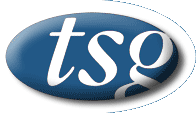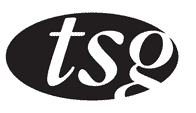|
Service Areas
|
Tax Tips
Absent any action from Congress, the U.S. economy will fall over the “fiscal cliff" as the ball drops at Times Square on January 1, 2013. The fiscal cliff is the result of the convergence of three events:
Of the three items, the first two will have a direct impact on U.S. personal income and transfer tax rates. Under President Bush, the top U.S. personal tax rate decreased from 39.6% to 35%. The reduction was not permanent and will expire on December 31, 2012. In his State of The Union address, President Obama proposed increasing the top two tax brackets from 33% and 35% to 36% to 39.6%. Therefore, it is highly probable that the top U.S. federal personal tax rate will return to 39.6%. Long-term capital gains rates are expected to increase from 15% to 20% as well. Also, qualified dividends are expected to lose their preferential 15% tax rate and become regular income, taxed at the federal rate of up to 39.6%. Obamacare will augment these tax rate increases with a new Medicare tax of 3.8% on unearned income for mid to high income taxpayers. With the Medicare tax, the top U.S. federal rate will increase to 43.4% on investment income (including qualified dividends previously taxed at only 15%), and 23.8% on long-term capital gains. Combined with state income taxes, these rates are higher than the corresponding rates in Canada, in most cases. These income tax increases of over 8 percentage points (28.4 percentage points on qualified dividends) will be combined with an expected increase in U.S. Estate Tax exposure. The current $5,120,000 exemption is slated to decline to $1,000,000 and the rate is scheduled to increase from 35% to a maximum of 55% if no amendments are made. President Obama has proposed that the exemption amount be set at $3,500,000 and the maximum rate at 45%. There are, however, no guarantees. Congressional agreement may convert the “fiscal cliff” to a less steep “fiscal hill”. Given that there is still a downward slope coming, many U.S. taxpayers are accelerating income inclusions (especially dividends) and gifts in order to take advantage of the lower tax environment that is clearly coming to an end. U.S. citizens in Canada should consider these strategies too. Non-compliant U.S. citizens living in Canada should also take note. Delaying catch-up filings may soon result in U.S. tax and interest that previously would not apply because U.S. tax rates were lower than Canadian. With the increase in U.S. rates, the corresponding Canadian tax may no longer be enough to fully offset the U.S. tax. Late filing U.S. returns may well result in interest and penalties that, previously, did not apply. Your TSG representative will be happy to discuss the impact of these likely changes on your current and future planning. TAX TIP OF THE WEEK is provided as a free service to clients and friends of the Tax Specialist Group member firms. The Tax Specialist Group is a national affiliation of firms who specialize in providing tax consulting services to other professionals, businesses and high net worth individuals on Canadian and international tax matters and tax disputes. |


